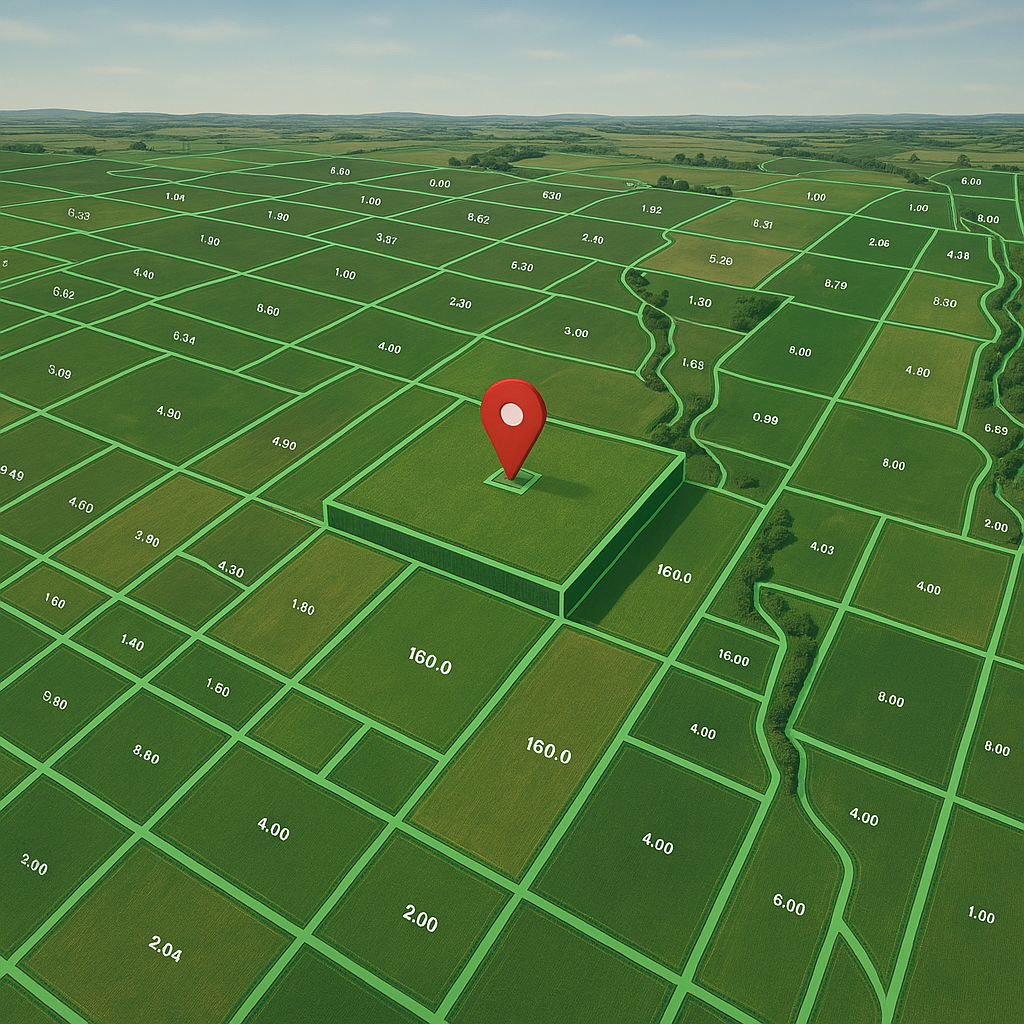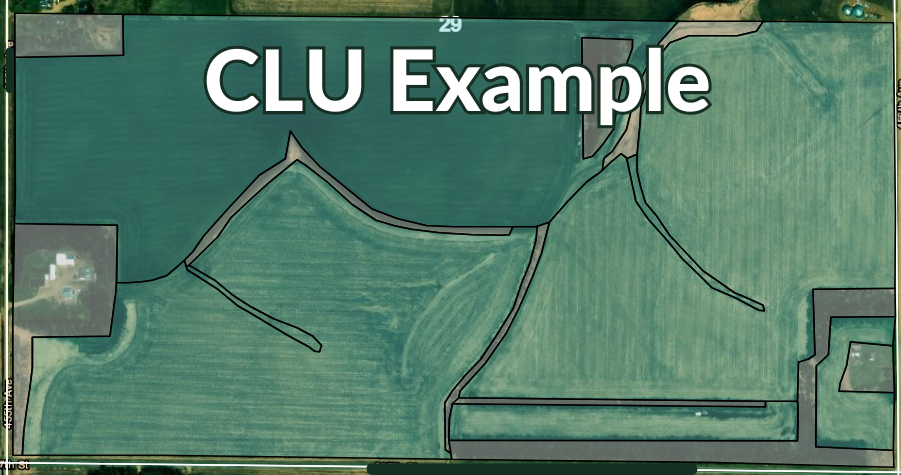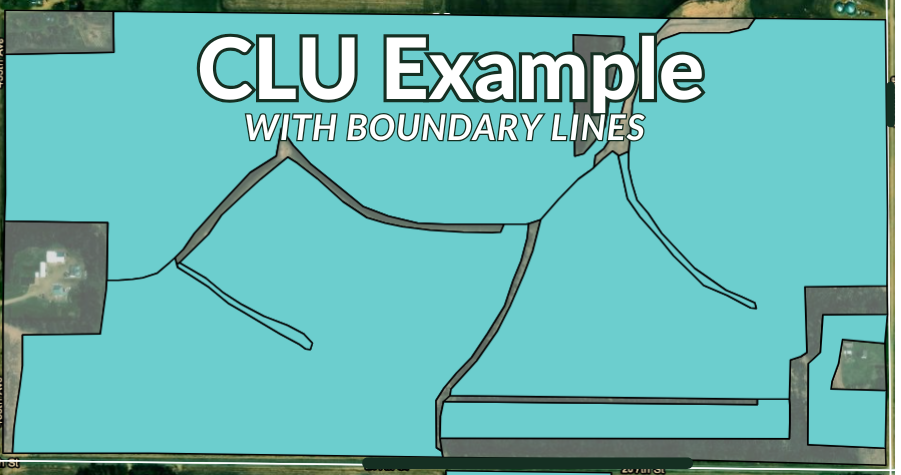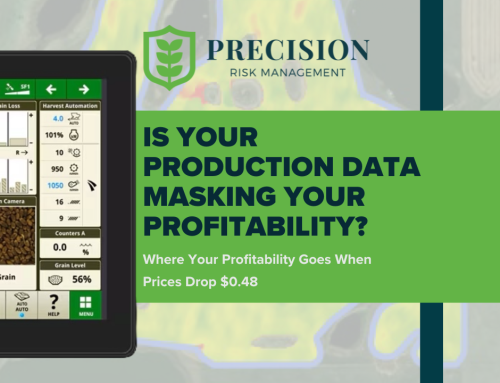CLU acres are at the heart of your crop insurance, but most farmers don’t know what they are. That can be a problem.
If your reported acres don’t match the boundaries in the USDA’s system, you could face denied claims or reduced coverage. That’s where understanding CLUs makes all the difference.
What Are CLU Acres?
CLU stands for Common Land Unit. Let’s break that down into plain language.
A CLU is a mapped boundary that defines a piece of land used for farming. These boundaries are created and maintained by the USDA’s Farm Service Agency (FSA) and are used as the standard across federal farm programs, including your crop insurance.
Your acreage reporting, policy coverage, and even how your units are structured all tie back to these lines on the map.
CLU Official Field Boundaries
Each CLU represents a single field or field segment that shares:
- The same land use (cropped vs. pasture vs. CRP)
- The same ownership or lease agreement
- Continuous physical boundaries (like fences, roads, or ditches)
So, if you split a field into irrigated and non-irrigated sections, those are typically two separate CLUs. Same goes for rented vs. owned land.

What’s Inside a CLU?
Each Common Land Unit includes:
- Field boundary lines (drawn using satellite imagery + on-the-ground verification)
- Farm and tract numbers from the FSA
- Total acres for the unit
- Land use type
- Legal land descriptions (Section, Township, Range)
These units are stored in USDA’s GIS (Geographic Information System) and are used for everything from compliance checks to crop insurance policies.


Can You Have Different Crops Inside a CLU?
A CLU is a mapped boundary, not a restriction on what you can plant. So it’s common for farmers to plant multiple crops within a single CLU. But there are important things to remember when doing this:
- You must report each crop separately.
- Even if it’s in the same CLU, you’ll need to provide separate acreage and planting dates for each crop.
- This is critical for accurate coverage and compliance.
- You may need to provide a field map or planting record.
- Especially if the crops are side-by-side in the same CLU, RMA will ask for supporting documentation.
- Precision planting data or shape files can help confirm which crop was planted where.
- Splitting crops inside a CLU does not change the CLU.
- The boundary stays the same unless you request an update at FSA.
- You’re simply reporting different usage within the existing CLU.
CLUs vs. What You “Actually” Farm
Many farmers say, “That’s not how I actually farm it.”
We hear that all the time. But here’s the key: the CLU doesn’t always reflect how you farm but it does define how you report.
This is why PRM’s precision technology Data Team are so important. We help align what your equipment records with the boundaries on file. We make your systems automatically report your planting and harvesting of to your CLUs.
Why CLUs Matter to Crop Insurance
Your crop insurance policy uses CLU data to:
- Define your insurable units (insurance “buckets” that has its own planted acres and production records)
- Verify planted acreage
- Determine coverage and indemnity
If the acres you report don’t line up with the official CLU boundary, that’s a red flag. You could end up:
- Under-insured (less coverage than you need)
- Non-compliant (triggering compliance reviews)
- Denied on claims (even if your loss is real)
How CLUs Are Used in Crop Insurance
RMA uses CLU data as the backbone for:
- Acreage reporting: You must report based on these mapped boundaries.
- Unit structure: Optional and basic units are built from CLUs.
- Loss adjustment: Claims are evaluated based on CLU acres and maps.
- Audit triggers: Differences between reported acres and CLU acres can flag your policy for review.
If you report a field as 120 acres but the CLU map only shows 105 acres? That’s a problem. Claims adjusters will rely on the CLU-defined boundary unless precision data proves otherwise.
Where CLUs Come From
CLUs were created by the USDA to provide a consistent, standardized way to identify and map agricultural land for use across farm programs, including crop insurance. CLUs are not something you create — they are developed and updated by the FSA, using:
- Satellite imagery (typically from NAIP)
- On-site verification by FSA staff
- GIS tools that draw, edit, and store field boundaries
You can request changes to your CLUs through FSA. But unless those changes are formally submitted and accepted, your acreage must match what’s currently on file.
Are CLUs Permanent or Always Changing?
This is where confusion often happens. CLUs are not updated automatically.
You must report to FSA and request an update to your CLUs. Until then, you’re required to use the existing CLU acreage for your crop insurance reporting.
- Combine two fields into one
- Change land use such as putting round into CRP
- Adding terraces or other reshaping of fields
Precision Acres Takes the Pain out of CLUs
Here’s the good news: PRM has tools to help you report your acres with technology you likely already own!
In our next article found here, PRM explores how to take the complicated reporting of CLUs to the digital age with precision acres.





